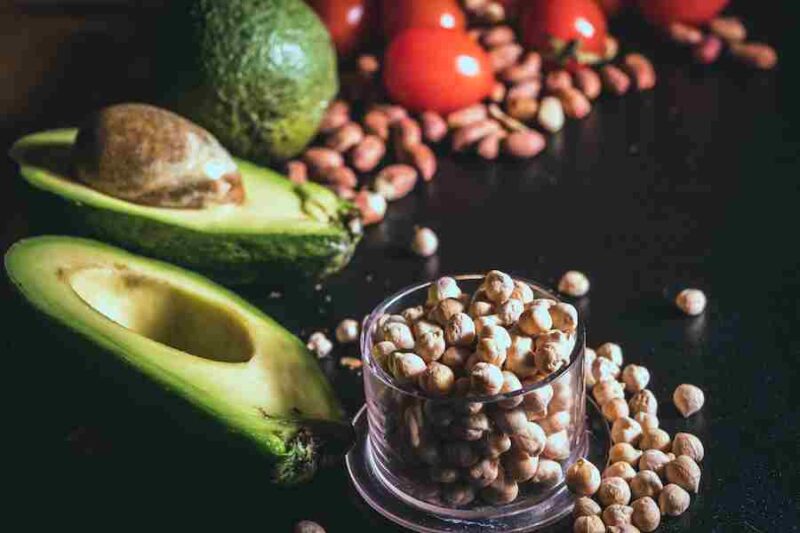Ferrero Rocher is a beloved chocolate brand known for its delectable, indulgent treats. As individuals become more conscious of the ingredients in their food, it’s crucial to address concerns about allergens, especially for those with peanut allergies. Peanuts in food products can pose a significant risk, making ingredient awareness paramount for individuals with allergies. In this article, we delve into the question many may ask: “Does Ferrero Rocher contain peanuts?” By exploring the brand’s offerings and examining ingredient information, we aim to provide clarity and guidance for those seeking peanut-free options. Understanding the importance of ingredient transparency and its impact on consumers with allergies is essential for a safer and more inclusive food experience.
Does Ferrero Rocher Have Peanuts?
Yes, Ferrero Rocher chocolates may contain peanuts. While the main ingredients of Ferrero Rocher typically include milk chocolate, hazelnuts, and wafer, some variations of their products may contain peanuts or peanut-related ingredients. It is crucial for individuals with peanut allergies to carefully read the ingredient labels before consuming Ferrero Rocher chocolates to ensure their safety. Additionally, individuals should be aware of the possibility of cross-contamination during the manufacturing process, which can introduce peanuts or traces of peanuts into the final product. To obtain accurate and up-to-date information, it is advisable to check the packaging or contact Ferrero Rocher directly for detailed ingredient information.
What Are The Ingredients Of Ferrero Rocher: A Chocolate Delight
The ingredients of Ferrero Rocher chocolates can vary slightly depending on the specific product and its variations. However, the classic Ferrero Rocher consists of the following ingredients:
- Ferrero Rocher uses high-quality milk chocolate as the outer layer of its chocolates. Milk chocolate typically contains cocoa solids, cocoa butter, milk powder, sugar, and vanilla for flavoring.
- A signature ingredient of Ferrero Rocher, whole roasted hazelnuts are nestled in the center of each chocolate. These hazelnuts provide a delightful crunch and distinctive flavor.
- Surrounding the hazelnut is a thin, crispy wafer shell. The wafer adds a light texture and complements the chocolate and hazelnut combination.
- As a sweetener, sugar is crucial in enhancing the overall taste of Ferrero Rocher chocolates.
- Ferrero Rocher may contain vegetable oils, such as palm or sunflower, to provide a smooth and creamy texture to the chocolate.
- Whey powder, a byproduct of milk, is often included in the ingredients to contribute to the overall texture and flavor.
- The wafer shell is typically made from wheat flour, which adds structure and crispness to the chocolate.
- Emulsifiers, such as soy lecithin, are commonly used in chocolate production to maintain a smooth consistency and prevent ingredient separation.
- Ferrero Rocher may include artificial flavors to enhance the overall taste and aroma of the chocolates.
Explore The Presence Of Peanuts Or Peanut-Related Ingredients In Ferrero Rocher
Ferrero Rocher chocolates may contain peanuts or peanut-related ingredients, although it depends on the specific product and variation. While the classic Ferrero Rocher contains hazelnuts, which are a different type of nut, some Ferrero Rocher products may include peanuts or traces of peanuts due to cross-contamination during the manufacturing process.
Cross-contamination can occur when products containing peanuts are processed in the same facilities or equipment used for manufacturing Ferrero Rocher chocolates. Even with stringent cleaning procedures, there is still a risk of minute traces of peanuts remaining, potentially harmful to individuals with peanut allergies.
To ensure your safety or the safety of someone with peanut allergies, it is crucial to read the ingredient labels carefully before consuming Ferrero Rocher chocolates. Manufacturers must list common allergens, including peanuts, in the ingredient list or as a separate allergen statement. If peanuts or peanut-related ingredients are present, they will be clearly stated on the packaging.
Additionally, it’s worth noting that ingredient formulations can change over time, and different Ferrero Rocher products may have different ingredient profiles. Therefore, it is advisable to verify the specific ingredient information on the packaging or contact Ferrero Rocher directly for the most accurate and up-to-date information regarding peanuts or peanut-related ingredients in their products.
The Importance Of Verifying Ingredient
Verifying ingredient information is paramount, especially for individuals with allergies or dietary restrictions. Here are several reasons why verifying ingredients is crucial:
Allergen Management: Verifying ingredients helps individuals with allergies effectively manage their condition. By checking ingredient labels, they can identify potential allergens and avoid consuming products that may trigger allergic reactions.
Safety and Well-Being: Verifying ingredients promotes personal safety and well-being. It reduces the risk of unintended exposure to allergens, which can lead to severe allergic reactions or other health complications.
Accurate Dietary Choices: Verifying ingredients enables individuals to make accurate dietary choices. Whether following specific diets like vegetarian, vegan, or gluten-free or avoiding certain ingredients due to personal preferences, checking labels helps ensure compliance with desired dietary guidelines.
Cross-Contamination Awareness: Verifying ingredients also helps individuals understand the possibility of cross-contamination during the manufacturing process. Even if a product does not contain a specific allergen as an ingredient, there may be a risk of trace amounts or contact with shared equipment, leading to inadvertent exposure.
Labeling Regulations Compliance: Verifying ingredients ensures compliance with labeling regulations. Food manufacturers must accurately label products, identify allergens and provide ingredient information to aid consumer decision-making.
Evolving Formulations: Ingredient formulations can change over time due to various factors, including supplier changes, product reformulations, or improvements in manufacturing processes. By verifying ingredients, individuals can stay informed about changes and adapt their choices accordingly.
The Distinctive Characteristics And Popularity Of Ferrero Rocher Products
Ferrero Rocher products are renowned for their distinctive characteristics, contributing to their enduring popularity among chocolate lovers worldwide. Here are some key features that make Ferrero Rocher chocolates stand out:
Luxurious and Elegant Presentation:
Ferrero Rocher chocolates are meticulously crafted with an exquisite presentation. Each chocolate is individually wrapped in gold foil, creating a sense of luxury and elegance. The gold-colored packaging adds to the allure and makes Ferrero Rocher a visually appealing treat.
Irresistible Combination of Textures:
Ferrero Rocher chocolates offer a delightful combination of textures. The outer layer consists of a smooth milk chocolate coating, which envelops a crispy wafer shell. Nestled within the wafer shell is a whole roasted hazelnut, adding a satisfying crunch to each bite. This multi-layered texture provides a unique and enjoyable eating experience.
Rich and Nutty Flavor:
Mixing milk chocolate, hazelnuts, and wafer creates a harmonious blend of flavors in Ferrero Rocher chocolates. The creamy milk chocolate complements the nutty taste and aroma of the roasted hazelnuts, resulting in a rich and indulgent flavor profile.
Iconic Golden Packaging:
Ferrero Rocher chocolates are instantly recognizable due to their iconic gold packaging. The spherical shape, golden wrapping, and transparent plastic dome showcase the elegance and sophistication associated with the brand. This distinctive packaging has become synonymous with Ferrero Rocher’s premium quality and has contributed to its popularity as a gift or special treat.
Versatility and Product Range:
Ferrero Rocher offers a versatile product range to cater to different preferences and occasions. In addition to the classic Ferrero Rocher chocolates, the brand has expanded its offerings to include variations like Ferrero Rondnoir (dark chocolate), Ferrero Collection (assorted flavors), and seasonal editions. This wide selection ensures a Ferrero Rocher product suitable for various tastes and gifting needs.
Global Recognition and Consumer Trust:
Ferrero Rocher has gained global recognition and has become a trusted brand in the chocolate industry. With decades of history, Ferrero Rocher has built a reputation for delivering high-quality chocolates that consistently satisfy consumers’ expectations.
Final Words
In conclusion, regarding whether Ferrero Rocher chocolates contain peanuts, it’s essential to be diligent and verify the ingredient information Gmapros. While the classic Ferrero Rocher primarily features hazelnuts, other variations or product lines may include peanuts or peanut-related ingredients. Individuals with peanut allergies or sensitivities must carefully read the ingredient labels, considering the potential for cross-contamination during manufacturing.
FAQ’s
Are Ferrero Rocher chocolates peanut-free?
Ferrero Rocher chocolates may contain peanuts or peanut-related ingredients in certain variations or product lines. It is important to check the ingredient labels for specific products to determine their peanut content.
Do Ferrero Rocher chocolates contain hazelnuts or peanuts?
Ferrero Rocher chocolates are known for their hazelnut filling. While they primarily contain hazelnuts, some variations or related products may also include peanuts or peanut-related components. It’s crucial to read the ingredient labels for accurate information.
Can individuals with peanut allergies consume Ferrero Rocher chocolates?
Individuals with peanut allergies should exercise caution when consuming Ferrero Rocher chocolates. They should carefully read the ingredient labels to determine if the product contains peanuts or traces of peanuts due to the risk of cross-contamination.










